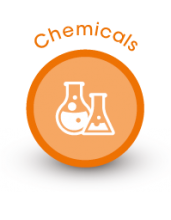
EPOS Technology Focus - Waste Heat
EPOS Technology Focus: Within the scope of the EPOS project, extensive literature and market research reviews were performed in order to identify different technological, organisational, service and management solutions that could be applied to different industrial sites and clusters. The collected information will aid in establishing on-site and/or cross-sectorial industrial symbiosis opportunities; additionally, to enhance overall sustainability, performance and resource efficiency of different process industry sectors. Through the cooperation of project partners, a longlist of different technological options was created. Resource material for this list included: scientific articles, project reports, manufacturer’s documentation and datasheets.
Waste Heat: Industrial processes in different sectors, depending on the process, may either require or generate enormous amounts of thermal energy. Much of the waste heat is disposed of into the environment; meaning heat sources are frequently not optimally utilised. Utilisation of waste heat is one of the core and generic activities for achieving industrial symbiosis and resource efficiency. When it is utilised, the waste heat is often reused in the process itself (e.g. pre-heating). Waste heat can also be used in other on-site processes, transformed into electrical energy, integrated into district heating networks or used for provision of industrial steam. An alternative option is to sell the waste heat to energy supply companies, which can transform it into electricity using the appropriate technological process (e.g. Organic Rankine Cycle). Utilisation of the waste heat is mainly dependent on its quality, i.e. temperature of the waste heat streams. Historically, there was a common belief that the utilisation of waste heat is only (economically) suitable for waste heat streams of moderate temperatures (e.g. more than 500°C). With the availability of new technological options, valorisation of waste heat streams of lower temperatures is possible (e.g. industrial heat pumps, Organic Rankine Cycle, etc.).

The EPOS project brings together 5 global process industries from 5 key relevant sectors: steel, cement, chemicals, minerals and engineering.
EPOS's main objective is to enable cross-sectorial Industrial Symbiosis (IS) and provide a wide range of technological and organisational options for making business and operations more efficient, more cost-effective, more competitiveand more sustainable across process sectors.
The research project receives funding from the European Community‘s Framework Programme for Research and Innovation Horizon 2020 (2014-2020) under grant agreement no. 679386. This work was supported by the Swiss State Secretariat for Education, Research and Innovation (SERI) under contract number 15.0217.











